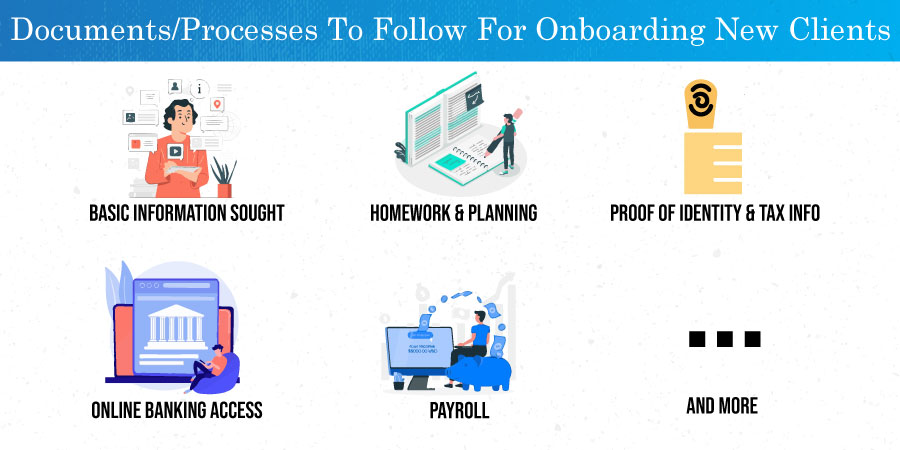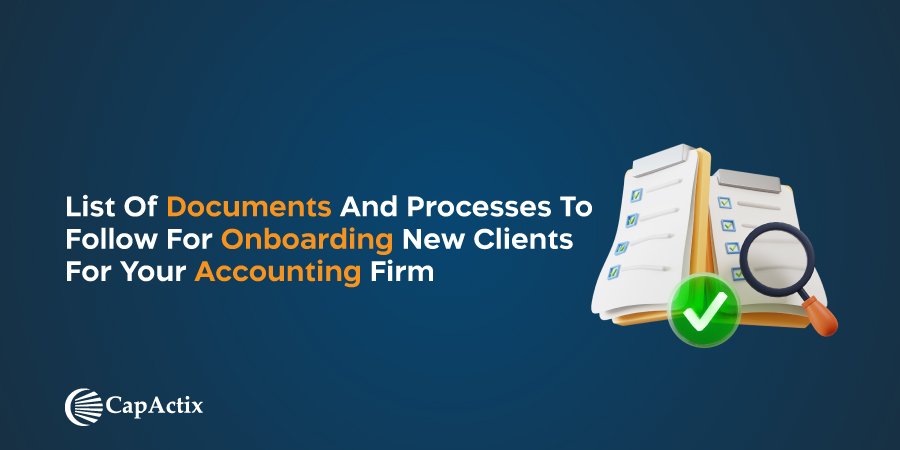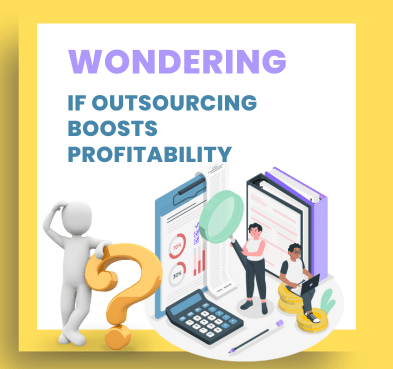Whether you’re talking about an accounting firm or an offshore accounting company, the necessity of a strong client onboarding process is, well-known. Client onboarding is concerned with making a positive first impression on new clients, as well as setting them up for long-term value. This factor is applicable for both traditional and offshore partnerships between clients and firms.
When it comes to onboarding clients, the process, as well as document requirements, can be different for each type of client. It is for that reason; you should create a separate checklist for each service you provide. For instance, have a separate list for tax preparation, virtual CFO services, and monthly accounting clients. This is crucial for a long-term CPA partnership with the client.
Client onboarding is an important step in building long-term connections, upselling services, and generating referrals. You may accomplish so by using specialist accounting software solutions to submit customer papers and information in a matter of days. You might also stick to a well-defined onboarding checklist. By using this checklist, you’ll be far more likely to get the most value for money (in terms of both times as well as money) and guarantee that your onboarding process is optimized and smooth. In an offshore accounting partnership, having clarity about documentation is the first step for a long-term partnership.
How do I onboard a new client to my accounting firm?

Basic Information Sought
First thing, you need to start with the basic information of the client and business. The basic structure, information, and work of clients and businesses will help you start smoothly in the process. Furthermore, you will have a clear organizational picture and organization hierarchy if you know the purpose, goal, requirements, description, sponsor and management authority, responsibilities allocated, milestone schedule, budget, and risks associated. In a nutshell, you should primarily focus on the following points:
- How frequently will you communicate with the client?
- What method will be used to distribute accounting packages?
- How much, if any, cleaning will be done?
- What method will be used for the bill? Is it set up for auto-billing?
One of the biggest issues many accountants have is a lack of adequate guidelines and strategies, which is mostly because they never specify the scope of their engagements throughout the onboarding process while looking for accounting customers. And thus, the above points can be useful to minimize such situations and problems. One of the crucial issues in offshore accounting partnerships could be the difference in compliance requirements which could be addressed easily through taking enough care during the onboarding process.
Doing Enough Homework and Planning
While onboarding new clients, it is crucial to keep in mind that you should have a complete roadmap with you of the overall structure. It’s helpful to write out the steps of the onboarding process in bullet points. Give them a visual representation of the processes that must be followed for onboarding to be completed, such as a checklist. This checklist breaks down the processes and keeps everyone on track. This also provides you with a reference point if communication breaks down. You may approach the customer in context rather than merely following up on the next step. One of the crucial parts of the roadmap is the business plan. CPA partnerships are based on the long-term integration of business interests with the firms.
A strategic business plan to gather information on the client’s firm, equipment, and surroundings. As a result, you must document them to understand the company’s future. You have to consider the following points while making a business plan:
- While using a systematic procedure and appropriate tools to onboard new clients, you must keep the budget in mind. This is to avoid over-budgeting as a result of unstructured procedures, poor communication, manual processes, unconnected tools, and delays caused by clients.
- Few practice procedures, such as monthly agreements, initial draught generation time, and execution time versus client type, maybe monitored using Key Performance Indicator (KPI) metrics.
Proof of Identity and Tax Information
Request that the client provides identity verification using relevant ID, as well as ask for the following document for tax information.
- Tax Registration Number: This identifier for business owners or individuals will help in the mapping of sales and purchase data, as well as for compliance and regulatory purposes.
- Returns from the previous tax year: By filing past year tax returns, you can avoid the penalty and interest costs that come with not filing a tax return. Social security also has advantages, such as the ability to borrow money for a home, a company, or an education.
Online banking, credit card, and loan accounts access
The recording of transactions and bank reconciliation, as well as the generation of the balance sheet and cash flow statements, are all part of the client’s bank account information. However, there could be times when a client would be reluctant to share such information and might want to keep the control of payments in his own hands. This mostly happens when the relationship between a client and the firm is new and there are early trust issues. In such a case, a firm must not be pressing about such details and should allow enough time to build mutual trust before such a handover could be made.
Payroll
A comprehensive solution is given through cloud-based software operations for optimally handling the payroll requirements of your organization’s linked personnel. If the client wishes, payroll-related information could also be shared with the accounting firm.
Sales Tax Certificate/Other Taxation Certificates
Sales Tax certificates issued by the country’s tax authorities must be collected from clients and checked for accuracy and validity. Files should also be reviewed for expiration and changes in conditions.
Fixed Asset Information
This information is important for onboarding new customers and managing investments. It handles regulatory risks as well as Know Your Customer (KYC) regulations. International financial reporting standard (IFRS) criteria are satisfied thanks to the asset management software. Data customization is additionally aided by asset status, history, and location management features.
Here you can read about Leadership styles to know and one you should adopt for the success of your Accounting Firm
Software Usage
To ensure that your firm is coping up with all the guidelines and needs, there is software that can be used to help you with it, such as Hubdoc, Paychex, screenshot monitor, and many others. They can help you to streamline your operations and make them more efficient. Depending on the geographic location of an accounting firm, the software needs and logins might also change.
Offshore accounting services have increased in popularity due to the high-quality assistance provided by offshore accounting firms to various clients. An accounting firm needs to plan the onboarding process for ensuring long-term association with the client. Proper research and setting expectations along with understanding clients’ needs are good points to start. Your accounting firm will be more successful in the long run if your onboarding time is reduced. Every day that clients spend in the onboarding phase waiting to provide you with the appropriate documentation is time lost. The objective should be to make this procedure as efficient as feasible by speeding it up. It is also crucial that the firm should not ask for documents periodically, and hence some important list of documents should be demanded at the time of onboarding, and proper data management should be facilitated.
If you are looking for an offshore accounting partner for your CPA firm, Contact CapActix at biz@capactix.com or call us on
















